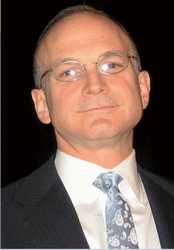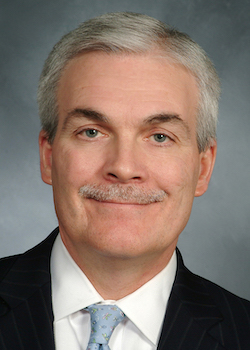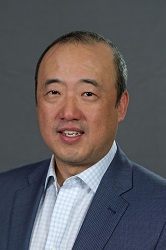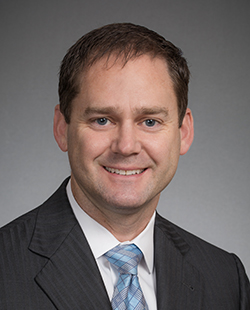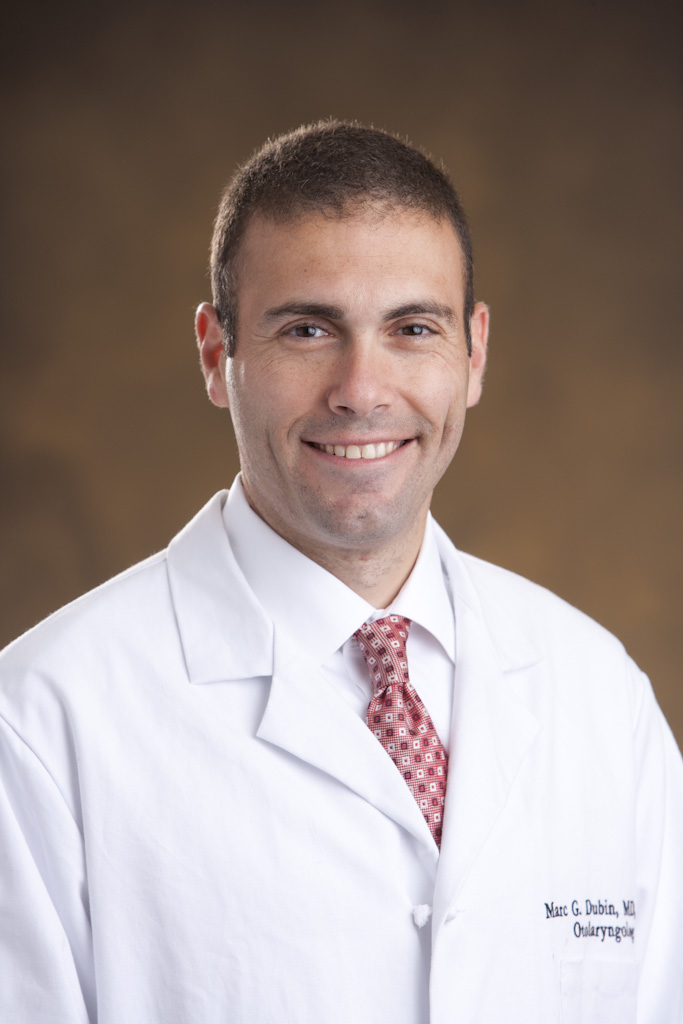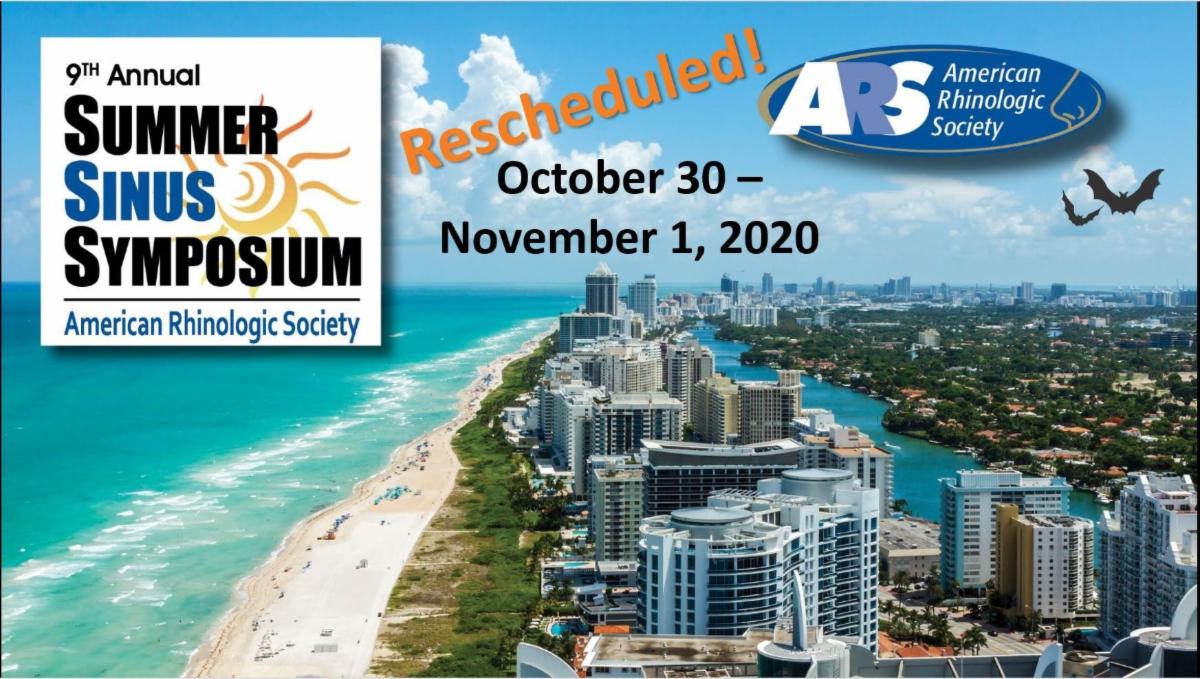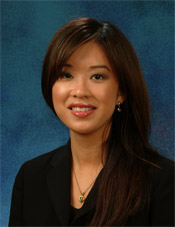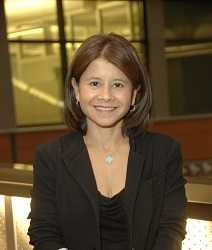- About Us
- Membership
- Practice
- Education
- Research
- Meetings
- RTC
- Journal
- Newsletter
 June 2020In This Issue:
President's ReportRobert C. Kern, MD, FARS
Dear Colleagues: These are certainly very different times for everyone, particularly rhinologists. As the Covid-19 pandemic appears to be lessening, we are all preparing to resume regular care for our patients with sinonasal disease. The American Rhinologic Society (ARS) has been working with the American Academy of Otolaryngology – Head and Neck Surgery (AAO-HNS) to provide some guidance on how to re-open your practices, with an eye toward patient and provider safety. Obviously, we are all working from the perspective of incomplete data. Furthermore, we are serving different patient populations in a range of geographic settings with variable access to personal protective equipment (PPE). Nevertheless, we hope this document, available on the ARS Website, will be able to provide significant guidance as we begin the process of resuming care. As you all know the COSM meeting was cancelled but we are optimistic that the Fall ARS/AAO-HNS meeting in Boston will proceed as planned. The Summer Sinus Symposium was delayed until October, when we anticipate the situation will have further stabilized. The weather in Miami will be beautiful and we look forward to another great course. Lastly, I would like to send thank you to our Industry partners. Your support for our programs is absolutely essential to our continued success and very much appreciated. Some of you have assisted us in our Podcasts at the start of the pandemic, which was a service to our membership helping to keep them informed as events unfolded around the world. Thank you all for your continued support of the ARS. These are memorable times and trying times, but we will get through this. Executive Vice President’s ReportMichael G. Stewart MD, MPH, FARS
It is an honor to serve as EVP for this outstanding and dynamic Society. Dr. Joseph Jacobs was the American Rhinologic Society (ARS)’s first EVP, and he left the Society in outstanding shape and poised for even more success. The ARS held a Strategic Planning Retreat in January 2020, and we addressed many topics important for the future of the Society. We created several Task Forces and the groups made important recommendations – some for implementation and some for future study. The Membership & Diversity group is exploring our current membership categories, and considering expanded opportunities such as International members, and clinicians from related specialties. They also recommended the creation of a Diversity Officer and Diversity Committee, which the Board approved and finalized this Spring. The Meetings and Education group recommended several enhancements to improve our meetings and our online educational opportunities. The Governance and Administration group recommended some important streamlining of our Bylaws and Policies & Procedures. The Research group recommended some restructuring of our grants to improve mentorship, and to improve potential clinical impact. The Specialty Society Relations group is working on enhancing our international connections, and perhaps co-hosting more international meetings. The Industry Relations group has plans to build on our existing partnerships with so many outstanding partners in several different venues. And finally, the Finance group recommended creating a Research Endowment to provide a stable platform and opportunities for growth of research funding, which was successfully accomplished before the recent stock market declines. I believe that these efforts will be strategically very important for the future success of the ARS. Our Society has a great relationship with the American Academy of Otolaryngology-Head and Neck Surgery, and I am in regular communication with Dr. Jim Denneny, the Academy’s EVP/CEO. We work together on many issues related to the specialty. This year is proving to be a bit of a challenge for the Society, as the Covid-19 Pandemic has forced the cancellation of our COSM meeting and the postponement of our Summer Sinus Symposium. However, we have taken advantage of online educational platforms to provide education on Covid-19 for the Rhinologist, thanks to the outstanding support of our industry partners. We still hope to be able to have an Annual Meeting before the Academy meeting in Boston in September, and we hope to see you at our rescheduled Summer Sinus Symposium in Miami Beach on Halloween weekend! Thank you for your support of the American Rhinologic Society. President-Elect’s ReportJoseph K. Han MD, FARS
Dear friends and colleagues, I hope you and your family are well and staying safe during these challenging and unprecedented times. We have created an exciting program for this year’s Annual Meeting of the American Rhinologic Society (ARS). The fall meeting will be held on Friday, September 11th and Saturday, September 12th, 2020, just preceding the American Academy of Otolaryngology – Head and Neck Surgery (AAO-HNS) annual meeting. The meeting will be held at the Renaissance Boston Waterfront Hotel. With the cancellation of the COSM meeting, it has provided ARS a unique opportunity to combine the scientific presentations from COSM into the Annual Meeting. The Annual Meeting will therefore have 110 oral presentations and 276 poster presentations. This 2020 ARS Annual Meeting will have the largest number of scientific presentations ever in the history of the ARS. I hope you will be able to attend the meeting to benefit from the wealth of fascinating and practical information covering, rhinology, allergy, and skull base diseases. The meeting will highlight the top ten oral presentations. I have seen these abstracts and know that these presentations will be exceptional. One of the highlights for our Fall Annual Meeting is the annual Kennedy Lecture. Now in its 16th year, the Kennedy Lectureship has brought us the perspectives of many leaders in the field of rhinology. This year will be no different! Peter Hwang is the Kennedy Lecturer for The nine panels for our Fall meeting will be varied and engaging. The panels will cover diverse concepts ranging from updates in coding, multidisciplinary approaches to management of nasal polyps including the use of biologics, and impact of COVID-19 that has had a very pointed effect on the rhinology practice. We are also planning a very interesting, and perhaps even controversial panel reviewing the evidence based approach to the management of allergic rhinitis. One of the panels is sponsored by Women in Rhinology and will talk about “Work-life balance during COVID-19 era”. There is no doubt that there is a large amount of material and definitely something for everyone in this year’s Fall meeting. If you know me, I am an optimist. I continue to hope that the ARS meeting will occur as planned in Boston without any interruption. However, we are also making contingency plans. If we are unable to hold an in-person meeting, we will be prepared to hold a virtual ARS Annual Meeting. The scientific content of the virtual annual meeting would be the same as the in person meeting. There are many people that I would like to thank in making this program possible. Please join me in thanking the program committee for their hard work in choosing among so many submitted abstracts and creating such a high-quality program. I would also like to personally thank our industry sponsors who have agreed to support the ARS Annual meeting no matter the format of the scientific meeting. Finally, to our ARS members, your participation and support for our Annual Meeting is essential. Your contributions to ARS have allow us to create a wonderful scientific and rigorous educational platform. I hope to see you in Boston! Summer Sinus Symposium Update
Due to the COVID-19 pandemic, “Summer Sinus” will be moved to October 30-November 1st! The Summer Sinus Symposium (SSS) will still be held in South Beach, Miami Florida at the newly renovated Loews Hotel, directly on the beach. This gives us the best chance to preserve the “Best Sinus Course in the World” in a terrific location during a time of year where the weather should be beautiful! REGISTRATION IS NOW OPEN for this dynamic course https://cvent.me/GVnAQ1. For those of you who are already registered, your registration will automatically be moved to the new dates. CURRENT REGISTRANTS WILL HAVE TO RE-REGISTER THEIR HOUSING so please make sure to do this: https://www.loewshotels.com/miami-beach/sinus-symposium If you have not attended the SSS before, it is like no other American Rhinologic Society (ARS) course. The course is thoughtfully designed to make your practice better, immediately. Leaders in our field, both academic and private practice, will moderate interactive panels to tackle the greatest challenges in rhinology. You will learn about the newest equipment, surgical techniques, medications, and devices to improve the care for your patients. There will be an emphasis on in-office procedures, surgical coding, social media optimization, management of inflammatory sinus disease, and the newest techniques in skull base surgery. New to the SSS is a track of panels on Sunday presented in Spanish. In addition, the general ballroom panels on Friday and Saturday morning will have live translations in Spanish. Also new this year is an entire track devoted to allergy and inflammatory sinus disease that will run concurrently with the main session. As with prior SSS courses, there will be an incredible Signature Event to socialize with our colleagues. Think sand, sandals, and music. Save the NEW dates on your calendar now. We hope to see you then.
Case of the QuarterMichael T. Yim, MD Case DescriptionA 69-year-old female presented with four months of nasal whistling while breathing. Symptoms began after a fall during which she sustained direct impact to the face and nose. She did not pursue medical evaluation at that time. She denied a history of recurrent epistaxis, nasal obstruction, prior sinonasal procedures, and illicit drug use. Past medical history was significant for hypertension, congestive heart failure, and insulin dependent diabetes mellitus. She had audible whistling sound at rest. An anterior septal perforation with crusting along the posterior edge was visible on anterior rhinoscopy. Crusts were debrided under nasal endoscopy and size was measured at 1.8cm diameter. Adjacent nasal septum, nasal floor, inferior turbinate, and lateral nasal wall mucosa appeared normal. Bony and cartilaginous framework were intact upon palpation. CT imaging re-demonstrated the perforation, but was otherwise unremarkable. Given the symptomatic nature of the perforation, the patient opted for definitive surgical intervention. Our preferred method of surgical closure with adjacent tissue transfer is the anterior ethmoid artery (AEA) septal flap. This was first described in 2011 by Castelnuovo et al.1 and has steadily gained popularity since that time. The flap is pedicled superiorly from the AEA and can be harvested from either side of the nose. The anterior and posterior cuts are made vertically along the septum, with the anterior cut incorporating the posterior aspect of the perforation, and the posterior cut located approximately 5-10mm posterior to the axilla of the middle turbinate. Depending on the size of the perforation, these cuts can be extended down to the nasal floor and up laterally into the inferior meatus to maximize the length of the flap. The remaining inferior cut is made connecting the anterior and posterior cuts. The flap is then elevated in a subperichondrial plane and rotated anteriorly to cover the perforation, then sutured into place. A contralateral flap is not necessary. Acellular dermal grafts or cartilage grafts can be placed on the contralateral side for additional scaffolding support. Silicone stents are then placed bilaterally for support as well as to reduce crusting and facilitate re-mucosalization of the donor site. Figure 1. Boundaries of the AEA flap are shown in color 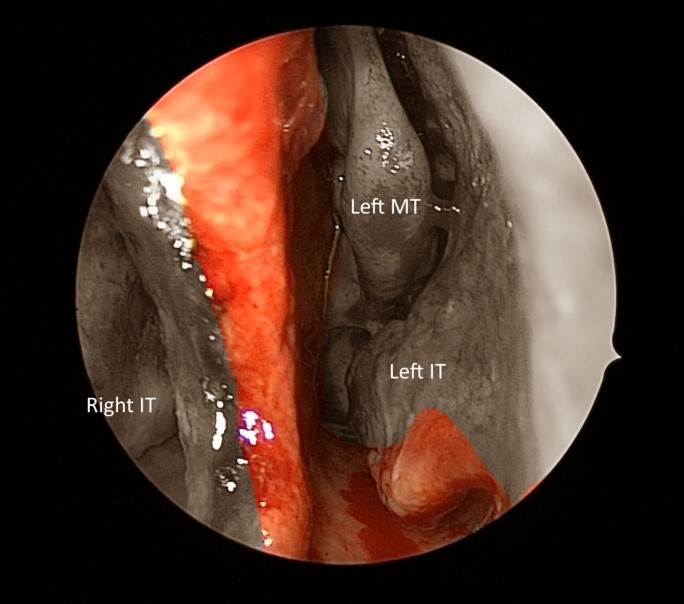
Figure 2. AEA flap covering the perforation following harvest 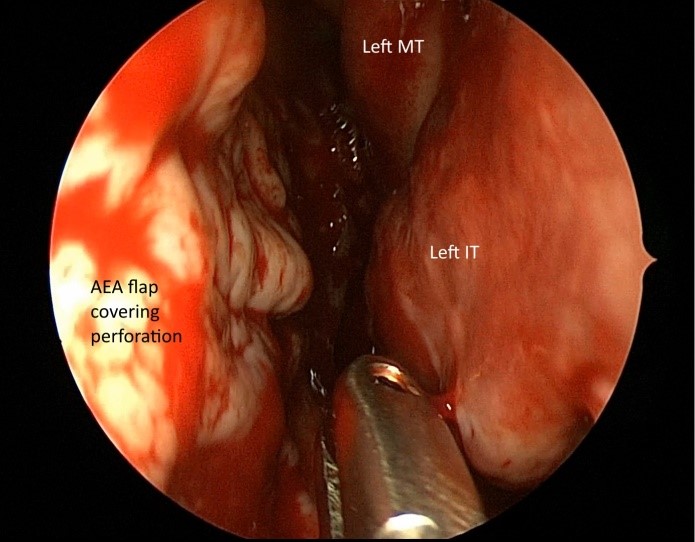
Figure 3. Acellular dermal graft visible through the contralateral side 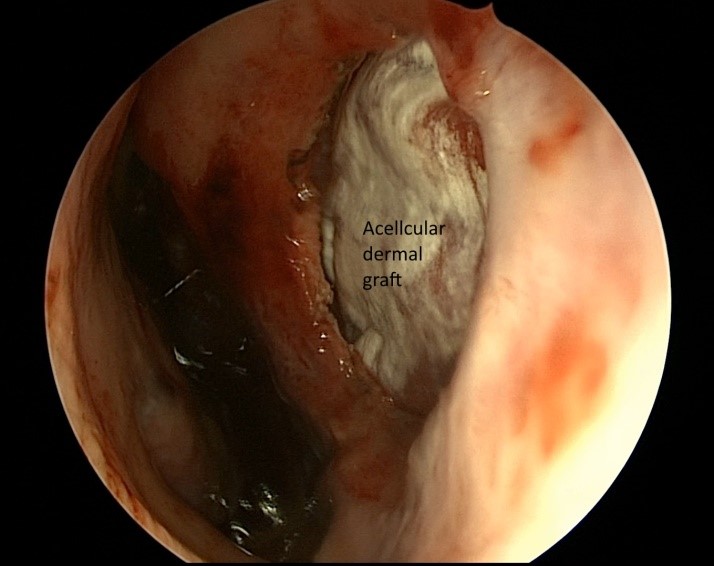
Nasal Septal PerforationsNasal septal perforations have a prevalence of 1% in the United States. Septal perforations can be seen due to autoimmune, neoplastic, infectious, traumatic and drug-related etiologies.2,3 Nasal septal perforations may present with symptoms of whistling, nasal obstruction or crusting, but are often discovered incidentally during the workup of other diseases.2,4 When symptomatic, these perforations have been shown to affect airflow fluid dynamics and sleep parameters with an overall significant negative impact on quality of life.5-7 Due to the vast array of etiologic possibilities, the workup for nasal septal perforations can be challenging and expensive, especially in the setting of those found incidentally and without symptoms. A thorough history is crucial to guiding work up of septal perforations which may include biopsy to rule out autoimmune or neoplastic disorders, or laboratory tests to rule out infectious (RPR, FTA-ABS, quantiferon gold, HIV) or autoimmune etiology (ANA, cANCA, pANCA, SSA, SSB, dsDNA, ACE). Urine drug screening should be ordered if suspicion for illicit drug use is high. During examination, it is crucial to measure the size of the defect during each visit and monitor for disease progression. The practitioner should also assess surrounding mucosa for abnormality and the remaining septum for osseocartilaginous support by palpation and imaging. Management of septal perforations ranges from nasal humidification to surgical repair of the perforation. The nature of the intervention is dependent upon the state of the underlying disease process that resulted in the perforation, the size and location of the perforation, and the remaining septal support. Patients with active autoimmune, infectious, neoplastic, or drug-related processes should be managed conservatively. These patients should be counseled on the use of nasal saline irrigations, nasal emollients, and avoidance of manipulation to minimize symptoms. Patients without active underlying diseases can be managed similarly with conservative measures aimed at symptomatic control. They can also be offered placement of a nasal prosthesis, such as a pre-fabricated or custom septal button8, or surgical repair of the perforation. Placement of a nasal prosthesis is a particularly useful option in patients who are poor surgical candidates due to medical co-morbidities. Patients with anterior perforations tend to be the most aggravated by their symptoms. Computational fluid dynamic models have demonstrated turbulent airflow in the setting of septal perforation as the likely source of symptoms.9 The reconstructive ladder can be applied to the repair of septal perforations. Perforations less than 0.5cm in diameter can often be closed primarily. A variety of approaches have been described to repair larger anteriorly based perforations, including rotational flaps, advancement flaps, regional flaps, and free tissue transfer. Most commonly, local reconstruction is adopted via an external or intranasal approach. Examples of local tissue rearrangement include, but are not limited to, the inferior turbinate pedicled flap,10 bilateral mucosal advancement flaps,11 anterior ethmoidal artery flap,1 tunneled sublabial mucosal flap,12 and facial artery musculomucosal flap13. Free tissue transfer using a radial forearm free flap14 has also been described for the closure of nasal septal perforations. Patients missing the L-strut for external nasal support may require an interposition graft of auricular cartilage, rib, iliac crest, cranial periosteum, or remaining septal cartilage or bone.15 Dermal allografts can also be used for septal perforation repair. While there are a multitude of surgical techniques to repair septal perforations, the AEA flap in particular is an appealing option due to its many benefits. This is a purely endoscopic approach and obviates the need for an external incision. Harvesting the flap is straightforward and similar to harvesting a nasoseptal flap, resulting in a minimal learning curve for rhinologists. The blood supply to the flap is robust as it is an axial flap (based on a named artery) as opposed to relying on random blood supply. Published series utilizing this technique have reported a 100% closure rate including large perforations up to 3.5cm in size.16 SummaryNasal septal perforations are uncommon, but when symptomatic can have a significant negative impact on quality of life. Treatment options include nasal humidification, placement of a nasal prosthesis, and definitive surgical repair. The AEA flap is a robust, pedicled flap that can be harvested and placed with a purely endoscopic approach familiar to endoscopic surgeons. References1. Castelnuovo P, Ferreli F, Khodaei I, Palma P. Anterior ethmoidal artery septal flap for the management of septal perforation. Arch Facial Plast Surg. 2011;13(6):411-414. Women in Rhinology Section UpdateJivianne T. Lee, MD, FARS
Although our Women in Rhinology (WiR) COSM event was canceled due to the pandemic, we hope to reschedule the roundtable discussion entitled “Leadership in Medicine: Forging your Path” led by current American Medical Association President Patrice Harris, MD, MA. As you can imagine, we were very excited to meet and speak with Dr. Harris, so stay tuned for updates regarding future events. In other (and better) news, we are thrilled to announce the approval of a WiR CORE grant that will be available in 2021. More details to follow. We would also like to remind and invite any interested females to contribute to the “Women in Rhinology Areas of Expertise and Lecture Topics” list that will be posted on the ARS website. This is a voluntary posting, and any WiR member can list their affiliation and areas of expertise if they wish. If you would like to add your name, please contact current WiR Information Officer Patricia Loftus at [email protected]. Lastly, it is hard to believe, but the 2-year term for our inaugural WiR governing council will be ending in the fall, and new elections will be held around the time of the Annual Meeting. Please be on the lookout for further updates about the nomination and election process for the next governing council. As always, to keep up-to-date on WiR events and initiatives, please follow us on Twitter (@women_rhinology) and IG (women_in_rhinology). Hope you and your families are healthy and safe! Jivianne T. Lee, MD, FARS - Chair: [email protected] Allergy and Immunology in Rhinology Section Update: Helping Members During the COVID PandemicAmber Luong, MD, PhD, FARS
The Allergy and Immunology Section (AIR) has been busy despite the limitations placed by the COVID pandemic. On April 23, AIR hosted the Rhinocast entitled “Management of the Allergic Patient in the COVID 19 Era.” Moderated by Cecila Damask, DO, panelists (Christine Franzese, MD; Kent Lam, MD; Michael Parker, MD; Michael Platt, MD; and Sarah Wise, MD) discussed various aspects of managing allergen immunotherapy during the COVID pandemic and how to safely restart immunotherapy. If you missed it, a recording is available here. Although moved to October 30 – November 1, the Summer Sinus Symposium will feature two half-day sessions focused on allergy and chronic airway inflammation management. Come join us in Miami to learn and share your experiences. Finally, on the education front, please be on a look out and complete a survey that we will be sending out to identify gaps in knowledge and interest in allergy and immunology in rhinology. The mission of AIR is to support rhinologists in advancing the care and science of allergy and immunology as it pertains to the care of patients with rhinologic diseases, with a focus on providing educational support. All American Rhinologic Society members in good standing are eligible to participate in AIR leadership and activities. Given the inability to meet in person this past year, elections for the chair and chair elect will be postponed to the Fall of 2021. However, please reach out to Amber Luong, MD, PhD, FARS if you would like to be active in this section and especially if you would be interested in a leadership position. Membership Committee UpdateErin K. O’Brien, MD, FARS
Currently we have 1104 active members in the American Rhinologic Society (ARS), similar to our numbers for last year at this time. We’ve seen growth in our trainee numbers with increased interest from residents and fellows-in-training. We have robust participation in our sections, including Women in Rhinology and Allergy and Immunology in Rhinology. Our affiliate (non-Otolaryngology physicians, PhDs, NP and PA’s) member numbers remain low, however, representing an opportunity for growth and participation by non-otolaryngologists with an interest in rhinology. For the Winter Board meeting in January, a Task Force was created to examine options for increasing membership and involvement in the ARS. The first option discussed would be to continue to primarily represent otolaryngologists who manage rhinologic and skull base conditions, focusing on research and educational offerings and advocacy for surgeons. We can continue to be the leading resource for Otolaryngologists and potentially add more sections, such as skull base. As the number of otolaryngologists in America is limited, to significant increase membership numbers, we would need to focus on adding more international members. We offer combined membership to the ARS for European Rhinologic Society members; we could expand this opportunity to other international societies and consider pairing with them for meetings to increase participation. Another option to increase membership would be extending regular membership to non-otolaryngologists. For allergists/immunologists and scientists with an interest in rhinology, the ARS could represent the most appropriate professional society. Our research and program committees would benefit from PhD scientists’ input in grant reviews and meeting presentations. Our educational offerings could be expanded with inclusion of allergy and immunology colleagues. For skull base surgeons, the ARS can focus on management of the anterior skull base for collaborative teams of Rhinologists, neurosurgeons, and oncologists. Otolaryngology societies with expanded membership beyond surgeons, such as the Head and Neck Society, have seen the benefits of increased collaboration for patient care and education. Just as the ARS has expanded beyond the early focus on the nose to now include skull base and allergy and tumors, the membership of the ARS potentially should expand as well to everyone who manages and studies these diseases. Broadening our membership to non-otolaryngologists, including committee participation and possibly voting rights, may present some challenges and concerns that should be discussed. This would require a review of the governing documents and changes to our bylaws. Our constitution lays out the purpose of the ARS: “To provide a forum for physicians and scientists who care for patients with nasal and sinus disorders to exchange knowledge and experiences…to spread scientific knowledge…, to increase education…, (and) to engage in, encourage, and promote medical research in Rhinology”. Mentorship Committee UpdateMurray Ramanathan, MD, FACS, FARS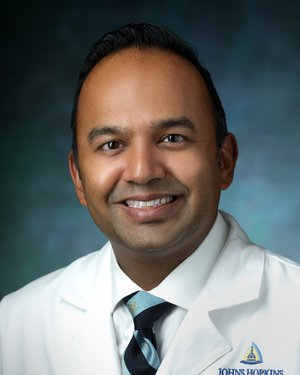
The mentorship committee has been off to a great start this year. We would like to welcome our newest members of the committee: Eric Wang, Brian Thorp, and Nyall London. We recently launched the main American Rhinologic Society mentoring program (with great help from Spencer Payne and Wendi Perez!) and will have a record 30 mentee-mentor pairings this year. Unique to the program this year will be the incorporation of mentoring in research careers and Women in Rhinology. With COVID19 restrictions, we anticipate that the mentorship program will remain strong with more regular ZOOM meetings! In terms of new projects, we are excited to work with the residents/fellows committee to launch a new junior mentoring program in the fall for our younger trainees which will be done in conjunction with Josh Levy. We will also work closely with the research and grants committee to help provide mentorship to early career ARS grant applicants to improve submissions for the next cycle. As a new committee we are excited to make an impact through increasing mentorship activities within the ARS. We are always open to suggestions from our membership with regards to new ideas or feedback on existing programs. Please feel free to email me at [email protected] Friends in Research CampaignThe 2020 Campaign is underway and doing well. We thank the members who have already contributed (see below). If you have not already donated, please consider making a donation today. With your support, we can continue to fund the studies that provide clinical insights valuable to the care of our patients. In the past, these efforts have helped to establish the ARS and its members as the leaders in rhinologic research. This work not only advances the care of our patients through scientific innovation, but also generates important data establishing the efficacy and cost effectiveness of our care. In the current financial landscape, this is equally important to ensure that our patients have access to the treatment necessary to address their complaints. Past grants have been largely supported by donations from industry, but it is up to us to ensure the strength and vitality of our specialty. We encourage the members of the ARS to join us in investing in the future of rhinology by making a tax-deductible contribution. We thank you again for your help in this worthy endeavor! Click to donate now and join us in our 2020 year campaign! Donate Now!Titanium($3500+)Melinda Thacker, MD DIAMOND ($2500)Lee Mandel, MD, FARS PLATINUM ($1000)Benjamin Bleier, MD, FARS SILVER ($250)J. Noble Anderson, Jr., MD BRONZE ($100)Sanford Archer, MD, FARS FRIEND ($50)Thomas Higgins, MD, FARS *as of May 18, 2020
IFAR HighlightsDuring this unusual time, the International Forum of Allergy & Rhinology has expedited the availability of research related to COVID-19. Below are a few recently published articles on this topic, with the full collection available here.
|

